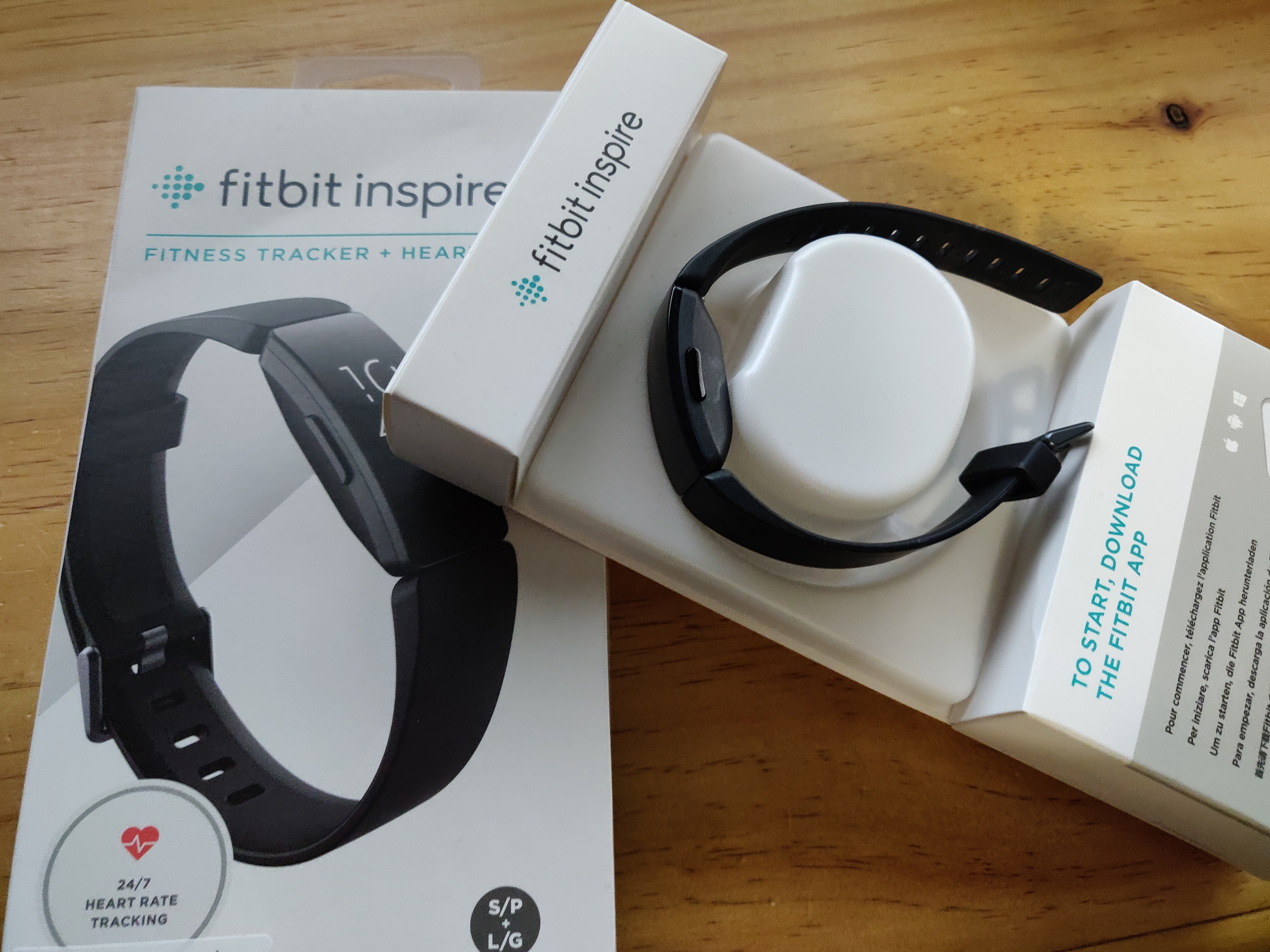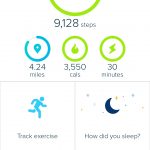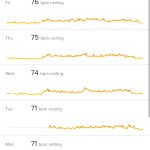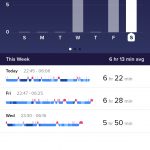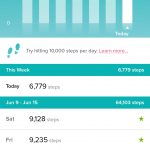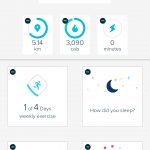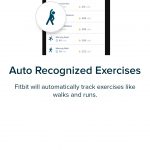Not so very long ago we saw a transition from fitness bands to smart watches, now with the sad state of WearOS were seeing more smart features in fitness bands and a resurgence in that market.
Fitbit is one of those manufacturers who are continuing to bring changes and innovation to the market, and this week, we’ve got the Fitbit Inspire HR to take a look at.
Fitbit is one of the earliest names to control the fitness tracker market, so much so that (similar to Samsung in the early Android days) people assumed that because you’ve got a fitness band that it is a Fitbit. This year we’re seeing a consolidation of the functions in Fitbit hardware and since my last Fitbit experience a few years ago, there’s been a significant leap forward in the software experience on the Fitbit app.
What’s it good at?
There’s a few elements of the Inspire HR that I was pretty happy with from a user experience perspective. Generally the touch response on the screen is excellent, I’ve tried some in the past where it’s been laggy, given false touches or just been unreliable in detection. The button on the side of the device is a great stop/back/complete function option, particularly after a while on a fitness activity when you’re a touch sweaty and the screen isn’t quite as responsive.

I’m really happy that Fitbit has done the smart thing and made the device Swim Proof. I say swim proof as that’s how they label it on their site. An important distinction to make is that it’s not IP rated but you can wear it all day, including in the shower, bath or while you’re swimming but I’d make a fairly safe bet that taking it to any depth further than a standard swimming pool would be the end of it with the pressure.
The other factor that’s mighty impressive is the fact that Fitbit has delivered exactly what they promised for battery life. “Up to 5 days of battery life” is listed and even with regular activity tracking, that’s exactly what I’m seeing.
Usually what I see from competitors is either they under promise and over-deliver, or their “up to” battery life is without any activity tracking involved – just steps so the battery life is significantly below what you see on paper.
What’s it not so good at?
One minor design criticism I have is that it actually sits quite high off your wrist. I found a number of times I caught it as I’ve been moving around and banging it where I wouldn’t normally knock a watch or other slimmer devices.

Given the connectivity capabilities these days, I’d love to see some basic notifications on the device. Not full notifications or ability to respond that you’d see on a WearOS device, but a simple “new SMS” or “unread email” notification would be a great addition, particularly if you could enable/disable them as you wish.
There’s not a lot to criticise here. It’s a simple device, that delivers what it promises and does it well. Primarily my criticisms are more about what I’d like it to do as a small addition to functionality.
How does it feel wearing the Inspire HR 24 hours a day?
It’s a pretty small device in the grand scheme, it’s also very lightweight. So wearing it 24 hours a day (except when charging, which doesn’t take long) really isn’t a trial at all, in fact a lot of the time I all but forgot it was there. It also gives a far more accurate gauge of your daily activities and particularly step count.
By wearing the Inspire HR for the full day, I’m confident that it’s getting not just a far more accurate gauge of the daily activities but the quality of sleep you’re getting as well.
In the box you get a 2 different sized wrist bands making it an excellent option for people who have slight wrists as the second band is quite small. A word of caution, once it’s fitted the bands are excellent but if they don’t seat perfectly then it will pop off with minimal to no warning.
What does it do?
Unlike many of the devices we’ve tested at Ausdroid in the past, the Inspire HR is very focused on movement tracking versus being a “smart” device. So the options here are (in comparison) limited, but what it does – it does well.
The main screen gives you option to view a single statistic of your choosing or you can cycle through them. You can also view the individual stats for: Steps, heart rate, Calories burned for the day, activity minutes for the day, distance covered on foot, days of activity vs your goal for the week, alarms, your water intake and weight tracking. Quite a lot for a simple device right?
Then you get to the activity tracking capabilities which covers Treadmill, Bike, Weights, Interval Training, Swimming and Running. There is an automatic exercise recognition which triggers after you’ve been on the move for about 6 or 7 minutes, then stops when your activity stops which is great – but there’s a difference between going to the local shop for a bottle of milk and going for a walk for exercise which the Inspire just can’t detect.
The Fitbit App
I mentioned earlier that it’s been a while since I used a Fitbit and the experience has changed quite a bit. The obvious start to that for me was the dashboard which is can be customised and (for those who wish to use it) has capability to add female health tracking including symptoms of the monthly cycle and fertility.
For a simple device the amount of detail that you can get from the Fitbit app is wonderful. You can select any individual metric that the app captures and filter back through all data that has been uploaded to your account. Steps, Sleep, Exercise and Water Intake are just a few but if you’re happy to put the effort into reliable and accurate data entry then the Fitbit app is going to serve you extremely well.
A number of our previous reviews have gone into significant depth on the app and its capabilities, check out the Fitbit Versa Review for a bit more on that.
What about the battery?
I touched on this earlier in the review and my comment stands, although the battery life is shorter than other devices I’ve used like this before: I’m impressed because their claim of up to 5 days is exactly what I’m seeing consistently.
I’m confident that if you were just tracking your steps, that you’d probably see a full week between charges which is impressive from such a small battery.
The heart rate monitoring runs in the background continuously which makes the solid battery life even more impressive. It would be nice to have some notification capabilities on the Inspire HR but that would significantly impact the battery life – potentially so you would need to be charging every couple of days.
Being able to check the battery percentage at a simple press of the side button is a well thought out feature, giving users an easy view as to whether they need to do a quick top up charge before heading out for the day or if their Fitbit can go the distance.
The charger for the Fitbit is a bit of a double edged sword. On one hand, it works really well and charges quickly. The connection is driven by magnet which helps not only locate, but maintain a good connection while you’re charging. On the other hand, it would be so nice if it was a standard connection like USB type C. I guess you can’t win them all can you?
Should you buy one?
The short answer is yes, yes you should!
Let’s qualify that a bit though. If you’re happy with a really simple step counter to get a gauge on your daily activity, then this is probably overkill for your needs. If you’re looking for a reasonable quality activity tracker that gives you some good data tracking metrics then this is a huge leap up in functionality without breaking the bank compared to the likes of a Xiaomi MiBand or other budget options.
The range of functions here are going to suit the vast majority of potential users, provided they don’t want notifications to come to their wrist in which case you may want to look at the Fitibt Charge 3. The wider range of Fitbit devices are for activity tracking and capable of dealing with daily activities including showering and swimming without the need to take them off all the time.
The Inspire HR is a lightweight, non-intrusive device that looks pretty good and delivers on what it promises to do. I’ve been really impressed with the experience that I’ve had and haven’t hesitated to recommend it to people that have asked since I got my hands on the review unit.
At $179.95 it’s not a cheap device, but it really does hit a very happy middle ground for users between the entry level step counters and the top range of Garmin devices that can cost upwards of $500 and it’s available now on the Fitbit site and through major retail stores.
Disclosure Statement
Due to hygiene reasons, Fitbit do not request fitness trackers back following review

